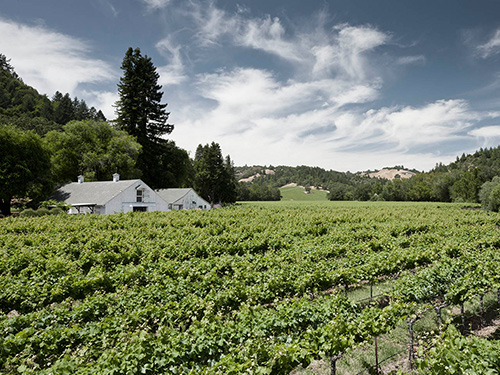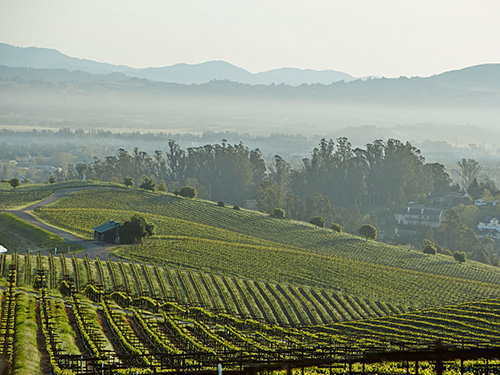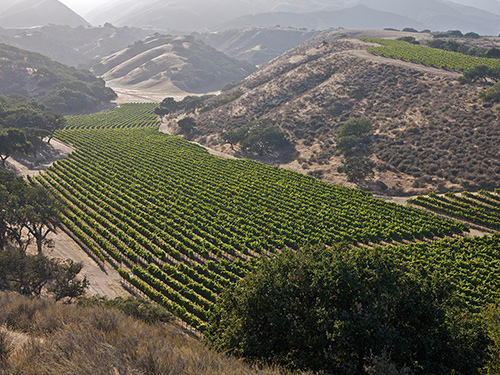Del Rio Vineyard
Initially planted in 1962, what is now our Del Rio Vineyard was selected for its promising coastal soil and advantageous situation near the Pacific and the Russian River. A diversity of clones makes this vineyard a veritable spice rack for winemakers during harvest.
Climate: Coastal cool, with heavy fog intrusion
Soil Types: Arbuckle, gravelly sandy loam, Yolo sandy loam, Zamora silty clay loam
A classic cool-climate site, Del Rio is influenced both by the Russian River and the nearby Pacific Ocean. This beneficial microclimate, coupled with a singular soil mixture of gravelly, sandy loam and silty clay loam, allows the grapes at Del Rio to maintain their acidity and develop nuanced flavors.
Top Pinot Noir Clones: 115, 667, 828, 2A, 23
We grow 44 acres of Pinot Noir at Del Rio, where vines are VSP-trellised, hand-leafed and hand-harvested for optimal quality. Decades after the first vines were planted, this vineyard and famous neighboring sites produce some of the world’s most highly regarded Pinot Noir.





